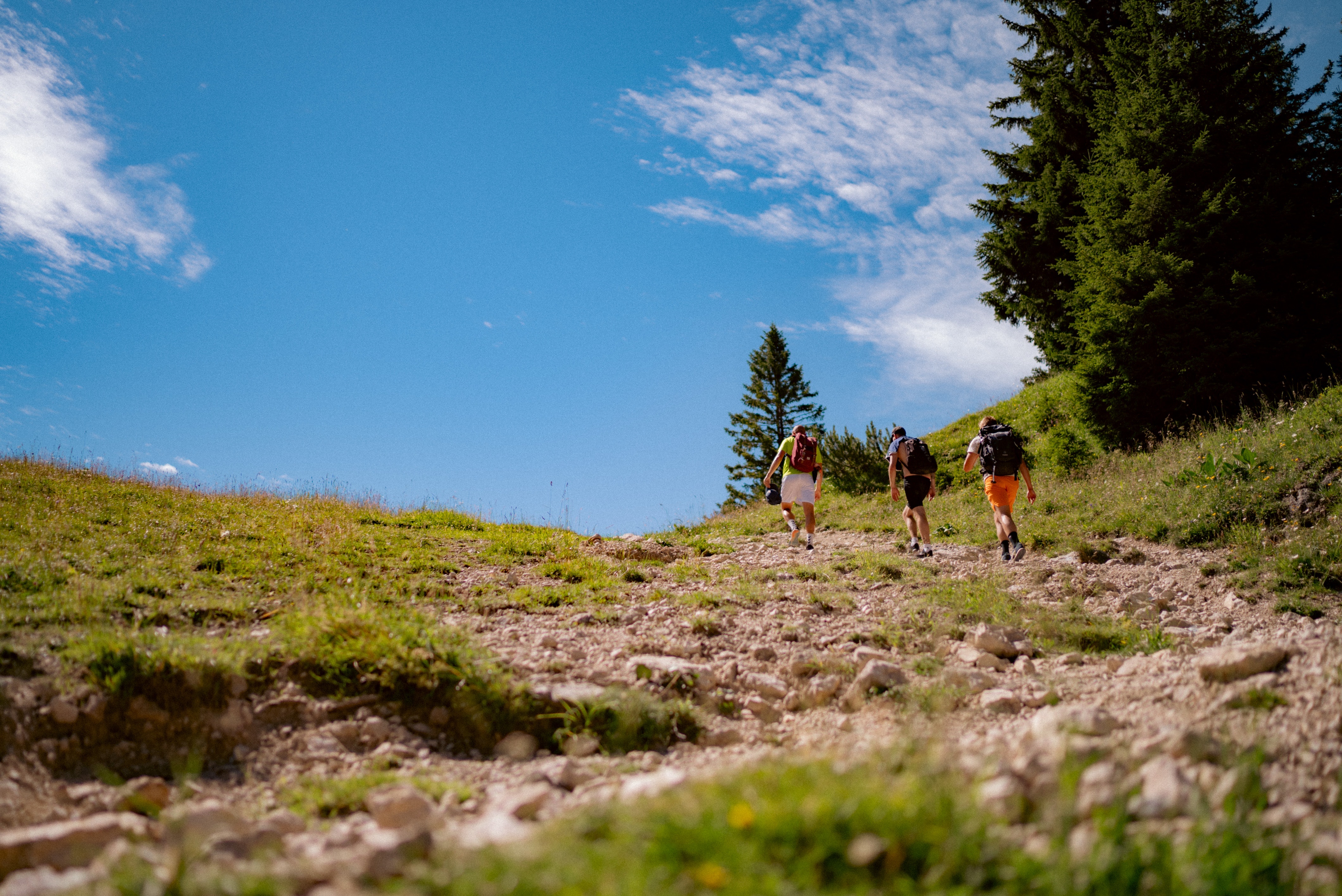- Home
- The Littlbug Blog
- ultralight backpacking
The Littlbug Blog
Recent Posts
Safety Tips for Backpacking
Posted by on
“It’s all fun and games until someone gets hurt.” This old adage is so true in everything we do. But what WE do is backpack, so we’re going to really focus on passing down what we know about safety and how it relates to our favorite pastime, hiking and backpacking! Because if no one gets hurt, it IS all fun and games!
Group outing or a solo adventure?
The most obvious way to ensure your safety when you're out backpacking, or even on a day hike, is to go with another person or a group of people. There is safety in numbers, and if you find yourself in a sticky situation, it’s reassuring to know that there is immediate help available to you.
While hiking with another person or two is a great way to ensure you have the help you need, we understand that going with other people is not always an option, or even wanted. If you do decide to go alone though, you should always make a plan. Going out on a whim can seem adventurous and fun, but if something were to happen to you without someone knowing that you are missing or where you might be able to be found, it can lead to a tragic situation. So be sure to make that plan, and let three or four responsible people know that plan. Let them know what your intended path is, and what time you plan to be home. The sooner someone realizes you’re missing, the better chance you have of being rescued. Assuming you do get home though, let those people know you made it safely as a courtesy.
Be aware of your surroundings
It’s important to familiarize yourself with the area you’re hiking, especially if it’s your first time on those trails. You’ll want to know where your entrance and exit points are at, but you’ll also want to know what sort of wildlife and even what type of plants you could potentially run into so you can be prepared. While they have largely been replaced by cell phones and GPS, we suggest a good old fashioned map. They don’t run out of batteries, and they always have reception. A map paired with a compass (and knowing how to use them) could be your saving grace!
Carry the essentials
There is much that you can (and should) leave behind when you are roughing it for a few days, but there are definitely some essentials too. We can’t stress the importance of preparedness enough, and would recommend you carry these 10 essential items with you anytime you hit the trails: A Headlamp (with extra batteries), a day’s worth of extra food (don’t forget your Littlbug camp stove!), a fire starting kit (a lighter AND a flint fire starter), a water filter (iodine or chlorine tablets is also a good idea), a first aid kit (preferably one specific to backpacking), extra layers of clothing (It gets cold at night and if you’re stuck in an unexpected bout of bad weather, you’ll be thankful to include items such as a hat and gloves), your preferred navigation tools (map and compass and/or a navigation app. Learn how to use your navigation app and your map and compass before heading out solo). Sun protection (sunscreen, sunglasses and a hat), and a small knife.
Share your plans with someone you trust
We’ve touched on this before in previous blogs, but it bears repeating. You should always share you plans with someone you trust. Tell them the essential information: where you are parking, what trails you will be on, where you will be setting up camp, and most importantly, when you will be home. All of this information should be shared with a trusted friend or family member, especially if you’re going solo. If no one knows that you’re going out into the woods, they won’t know if you’ve gone missing until it may be too late!
Make noise on the trail
If you’re backpacking through the wilderness, chances are you are going through areas with wild life. Unwanted encounters with wildlife often occur because they are just as surprised to see you as you are to see them. Making noise as you make your trek is helpful in keeping the surprises minimal. You don’t need to be making noise constantly, a few times an hour should be enough, but banging rocks, talking loudly, or even singing to yourself are great ways of letting nature’s tenants that you’ve come through for a visit.
On the flip side of this, we suggest keeping your earbuds at home. While music is a great companion for leisurely walks and jogs around the neighborhood, you will need to be more alert out on the trails. We mentioned that we want animals to hear you to avoid being startled, well, we want you to be able to hear the animals back.
Listen to your instincts
When something doesn't feel right, take a moment to reflect and decide whether continuing would be worthwhile. Just keep in mind that there's no shame in going home if something doesn’t feel safe. I've camped in places that just didn't feel comfortable to me. There was no particular cause, but something just didn't feel right. It took a little work, but I packed up my things and left. Perhaps an enraged bear would have paid me a visit that evening, or a nearby treefall might have crushed me as I slept. The key is to trust your instincts and pursue them without hesitation.
Safety should always be at the forefront of anything we do, especially when it comes to the great outdoors. So really take the time to ensure that you are putting yourself in the position for a fun time, but also a safe time! When it comes to outdoor skills the more you bring along, the less you have to carry. Skills don't break and they're never left behind. They don’t leak, they don't tear, and they don’t get wet!

What is the Best Clothing for Backpacking?
Gear is important. There is no denying that when it comes to being prepared for a trip into nature, gear will top most everyone’s list of essentials, but clothing is something that should also be taken into close consideration when getting your pack and yourself ready to hit the trail. When choosing clothing for your latest [...]
How do you go backpacking for the first time?
You’re ready to make the jump from a hiking excursion to a backpacking trip, but where to start? There are several different criteria to consider before you embark on this new type of adventure. For beginners, we have a simple four step plan to get you on the right path. (Pun HEAVILY intended.) 1. PICK A TRAILWhile [...]
Tips for Repairing Camp Stoves
Some backpacking stoves require maintenance or repair kits. When you’re out on the trail, the last thing you want to worry about is whether or not your stove will need to be repaired. We want your time on the trail to be a success, so here’s some options for you to consider.The best advice we can [...]
Your Outdoor Skills: Self Care in the Backcountry
Exploring the backcountry can take a toll on your body. Whether you are on foot, bike, or boat, it takes a lot of effort and puts extra strain on your muscles. From those taking months off to explore to the weekend warriors, we want to make sure you have the best experience in [...]
Your Outdoor Skills: Water Filters
The three basics humans need to feel secure are water, food and shelter. To have the best experience while you’re in the wilderness, it’s important to make sure each of these needs are met. While the body can live without food for some time, water is a different story. Drinking contaminated water may [...]
Your Outdoor Skills: Shedding Weight for an Ultralight Backpacking Experience
We look forward to throwing a pack on, heading into the wilderness, and sleeping in the dirt during the summer. Long winters in places like northern Minnesota make the summer months even more special. But it doesn’t matter where you live. Almost everyone experiences excitement when backpacking season begins each year. [...]
Your Outdoor Skills: The Best Experience with the Best Fuel
Wood burning backpacking stoves make for an ultralight backpacking experience. Their compact size will not only save you ounces, but also space in your pack. If your adventure plans take you to areas with plenty of natural fuel sources, you can leave some of the refined fuel at home and rely on nature [...]
 Loading... Please wait...
Loading... Please wait...








